Eight poignant and odd images of pet cemeteries

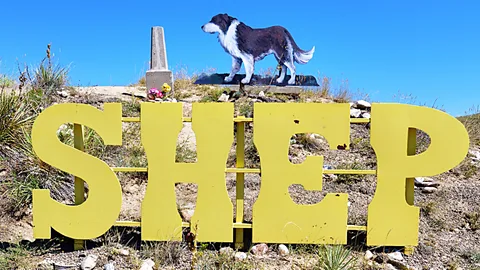 Paul Koudounaris
Paul KoudounarisA new photography book explores the practice of memorialising beloved beasts, from a performing elephant in Las Vegas to service animals and the world’s most loyal sheepdog.
The first time Paul Koudounaris visited Pet Haven Cemetery and Crematory in Gardena, California, the US author, photographer and expert in macabre art history was surprised to find his eyes wet with tears. “After writing three books about death, and not being affected by anything, five hours with those little graves had finally broken me,” he tells the BBC. “The sentiment there had become overwhelming.”
Faithful Unto Death – Pet cemeteries, animal graves and eternal devotion, published by Thames & Hudson this month, is the culmination of Koudounaris’s 11-year exploration of the cultural practice of memorialising animals, from hand-painted pet portraits lit by lanterns in a forested Helsinki graveyard to extravagant mausolea in New York and Boston made of granite and bronze.
The grave markers Koudounaris discovers commemorate a whole ark of animals. Beneath some lie great behemoths, such as Stoney the elephant, a regular performer at the Luxor Hotel, Las Vegas in the 1990s. Others pay homage to smaller companions: Jonny the snail, for example, befriended by a man whose garden he frequented in Echo Park, Los Angeles. “It just goes to show that people can bond with any kind of animal,” Koudounaris says.
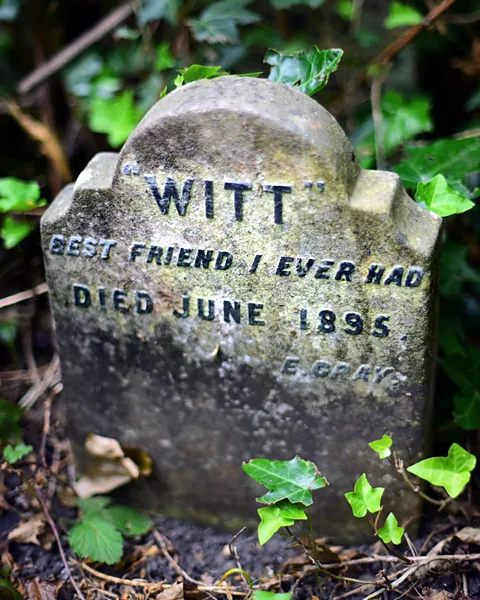 Paul Koudounaris
Paul Koudounaris1. The first urban cemetery
Humans have paid homage to companion animals for millennia. The ancient Egyptians built animal necropoli, mummifying their non-human friends so they might join them in the afterlife. But the pet cemetery as we now know it, says Koudounaris, began in England and was born of the Industrial Revolution. “In the 19th Century, for the first time, more people are living in urban environments than rural environments, bringing this taste for animal ownership with them,” he explains. Cremation was opposed by the Church, and a stigma − that persists today − forbade the burial of animals in human cemeteries. The first urban cemetery for animals, founded in 1881 in Hyde Park, London, answered the question of how to dispose of a swelling pet population in a location where private land was rare.
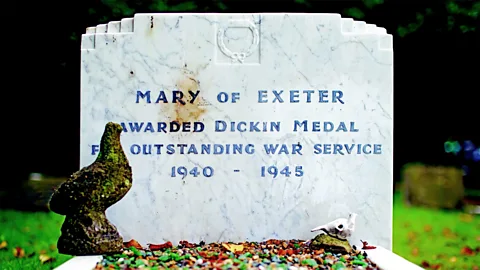 Paul Koudounaris
Paul Koudounaris2. Service animals
The continent took up the trend in 1899 when Paris, tired of its citizens throwing dead dogs into the Seine, opened the swirling Art Nouveau gates of the Cimetière des Chiens. As a new century dawned, the concept gradually went global. Today, the biggest adoptees are the Americans, with canine battle heroes acknowledged as far afield as Guam, Micronesia. Service animals are “the most esteemed”, and their graves “always the best tended”, says Koudounaris. One such grave, this time in Ilford Animal Cemetery in East London, commemorates Mary of Exeter, a pigeon who served in World War Two by carrying messages across the English Channel, a route that just one in 10 birds would survive. She was ambushed by Germany’s specially trained birds of prey and riddled with shotgun pellets, but Mary − sewn up and fitted with a neck brace − performed mission after mission, surviving against the odds.
 Paul Koudounaris
Paul Koudounaris3. The taboo of bereavement
At Wat Khlong Toei Nai, a Buddhist temple in Bangkok, owners can decorate their deceased pets with flowers and then take a boat ride to release their cremated remains into the river. “One of the things that we’re missing in Western culture is a ritual that provides closure,” says Koudounaris, who, in his work as pet grief counsellor, found many people feeling guilty or embarrassed about the length and depth of their bereavement. “I think that’s why it’s a lot easier if you’re in a culture that believes in the reincarnation, the transference of the soul, to not have that kind of hierarchy, to not have that kind of taboo,” he says. “Because you might come back as a butterfly, a cat or a human… there’s not that stratification.”
 Paul Koudounaris
Paul Koudounaris4. Shep the dog
Sometimes the story is not about an owner mourning a pet, but a pet mourning an owner. So it was with Shep, a Shepherd-Collie mix who, for six years, waited expectantly at the platform of Fort Benton railroad station in Montana, hoping his late owner, whose casket had been loaded onto an eastbound train in 1936, would one day return. The devoted dog became a local celebrity but refused the hospitality of well-meaning residents, preferring to keep up his vigil at the station. In 1942, deaf and infirm, he slipped into the path of a train. To assuage their grief and memorialise this most faithful of pets, the community buried Shep on a bluff overlooking the station, his name spelled out in bold yellow letters, and his painted silhouette watching the platform for eternity.
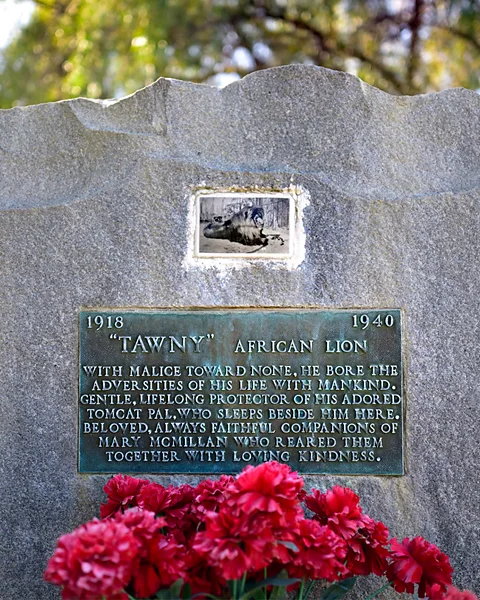 Paul Koudounaris
Paul Koudounaris5. Tawny the lion
It’s perhaps Los Angeles Pet Memorial Park, founded in 1928, that most stretches what we think of as a pet. In a city where, writes Koudounaris, “weird was the norm when it came to animal burials”, many of the deceased were performers in Hollywood’s film industry or faithful friends of stars. Mae West’s monkey, Boogie, is there, as is Topper, Hopalong Cassidy’s trusty steed. Among them is Tawny (1918-40), the roaring lion at the start of an MGM film, and a regular in the Tarzan movies. Owner Mary McMillan doted on Tawny, who she rescued from a circus when he was a cub. Neighbours were less enthusiastic, woken in the night by his almighty roar. When Cinderella, a stray tomcat, joined the household, the two felines must have sensed their shared genealogy. Though vastly different in size, they became inseparable. Fitting, then, that they now share one grave.
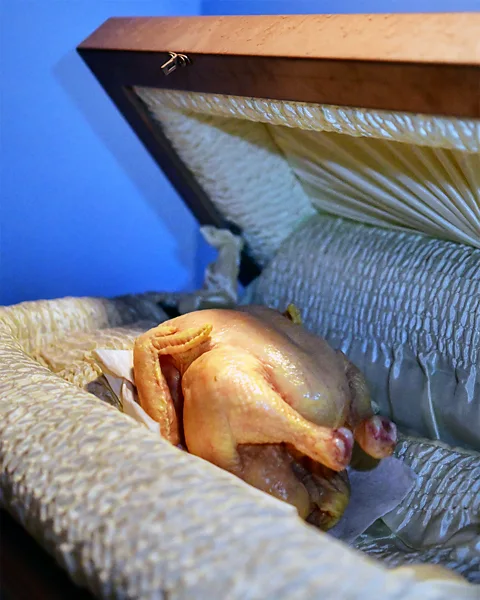 Paul Koudounaris
Paul Koudounaris6. Blinky the hen
In 1978, Los Angeles Pet Memorial Park’s tolerance for weirdness was really tested when conceptual artist Jeffrey Vallance turned up requesting a burial for Blinky, a headless Foster Farms fryer chicken he had purchased from the frozen section of his local supermarket. As the cemetery’s staff was expecting a pet hen with feathers intact, this bald lump of meat must have raised more than a few eyebrows. Whether it was a piece of performance art or a prank at the cemetery’s expense, the act raised important questions about cultural norms that cherish some animals while see others only as food.
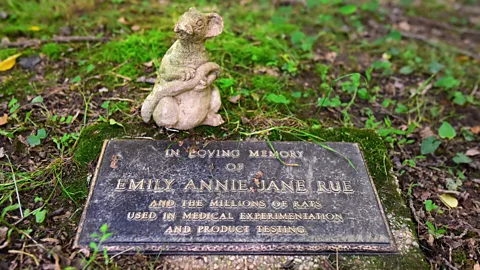 Paul Koudounaris
Paul Koudounaris7. Emily the rat and friends
An uptick in animal rights awareness in the early 1990s saw activism seep into pet cemeteries, replacing the avant-garde art created by Vallance with hard-hitting, unambiguous inscriptions. At the six-acre (24,281 sq m) Aspin Hill Memorial Park, a pet cemetery in Maryland, US, a memorial, topped with a chubby rodent nursing its tail, is dedicated to “the millions of rats used in medical experimentation and product testing”. Elsewhere in the cemetery, a grave full of sable coats labelled “products of human ignorance and vanity” needles again at our conscience.
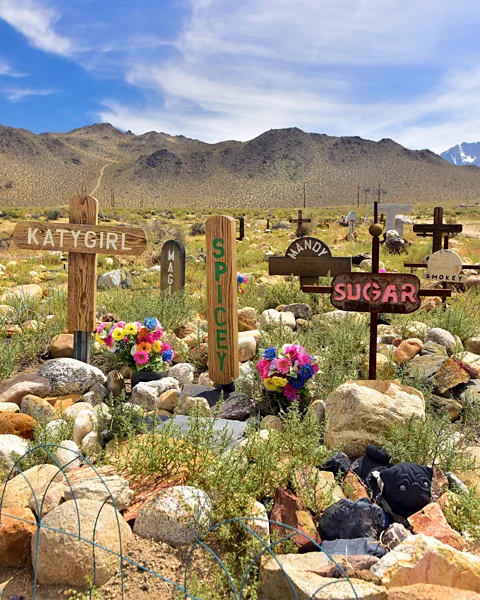 Paul Koudounaris
Paul Koudounaris8. Makeshift cemeteries
Unsignposted, and dotting remote landscapes such as the deserts of South America and the American West, where there is “ample public land” and “a paucity of prying eyes”, writes Koudounaris, the off-the-grid, handmade animal graveyards are perhaps the most touching of all. Most graves are simply marked by a painted rock or a makeshift wooden cross, although some have mailboxes, where owners have left letters for the dead. With no central administration or maintenance, “they, themselves, have a lifespan,” says Koudounaris. “You’ll see them grow and you’ll see them wither.” Whether it’s a painted board or a life-size marble sculpture, “what started in England eventually becomes something that exists in many forms worldwide,” says Koudounaris. “But they are all dedicated to the same thing: this idea that an animal that has been loved in life deserves a dignified end.”









